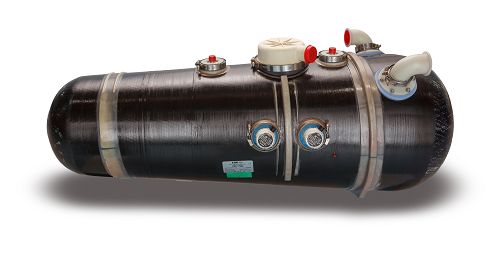No kidding. Previous employer did positive pressure tests on their tanks using water 'cause it’s less explody when things go bad.
I am horrified by the prospect of ever having to witness a pneumatic test.
I am also super bummed I didn’t get to observe a helium leak test at the shutdown I was just at.
(I’d love to deal with a normal PV now after two weeks of heat exchanger nightmares)
I used to rim tubeless blow-off testing for Bontrager MUSA rims. That was fun 
IIRC the test went up to 200 psi or so. Only had one or two blow-offs on proto rims
They pressure test stuff at work all the time. The test vessels are old navy cannon barrels. Last week they were testing some propane tanks to use as floats since they’re moving away from plastic fishing buoys. It just started crushing at like 400m simulated depth
400m deep is, like, a lot of atms tho right?
~4000kPa, which isn’t ridic, the vessels I was working with last week had a design pressure of 16000kPa.
But 4000kPa externally on a vessel designed for internal pressure is a whole other ball game.
Tank implosion videos are fun
I’ve definitely spent nights watching those videos.
Unloading a railroad tank car is interesting too: they pressurize the thing and the payload squirts right out. It’s great until something breaks and you end up squirting sulfuric acid, for example, all over.
Holy crap that rear facing interior shot was some horror movie level stuff.
No one ever got to witness implosion tests on our tanks. They were designed for vacuum at 30k-plus feet, so full vacuum even at sea level wasn’t enough to get them to turn innie. They had to be put into an autoclave, pull full vacuum on the tank, then increase the positive pressure inside the autoclave until it broke, and sometimes they never did. On the one and only negative burst pressure test I helped with we ran up to the max pressure of the autoclave and had to stop. Which was fine because we would have spent hours picking up carbon shards from someone else’s autoclave otherwise.
It was this thing that wouldn’t break, 737 NG waste tank. If you’ve pooped/peed on a 737-600 thru -900, you’ve enjoyed my work.

Edit: fixed image
A plant I used to work at had two big anhydrous ammonia tanks that they had on fill rotation to keep the plant running continuously. The truck offloading would hook up a compressor to remove the vapor from the storage tank and use that to pressurize the truck. A couple times, we rolled HAZMAT due to leaky seals when the gas detectors got set off.
I’m headed to a mine next week that does heap leaching. I’m going to stay clear of any of those shenanigans, if I can.
thanks for your service. that is rad.
I’m into this high-altitude poopchat, but isn’t the physics on this backwards? Or am I reading this totally wrong?
I didn’t accurately describe it. It’s really the pressure difference between the cabin and atmospheric pressure at altitude that it was designed for. Big B required that all tanks go through a burst positive and negative pressures as part of qualification that were greater than they’d see in service. Wish I could remember the numbers, but that was a long time ago.
KLM has a fun blog thing about aircraft pooping
Thanks, I was breaking my brain on that one.
I’ve always loved the world of airplane engineering, but this carbon fiber poop bomb is another level.
bold of you to assume I used the toilet
Thank you.
I’ve got the schwalbe version of this. Works ok but I’ve had trouble seating tires over 2". May be user error though.
It was surprisingly interesting, and disgusting when no one else is around and an old poop tank comes in for repairs that needs to be cleaned first…